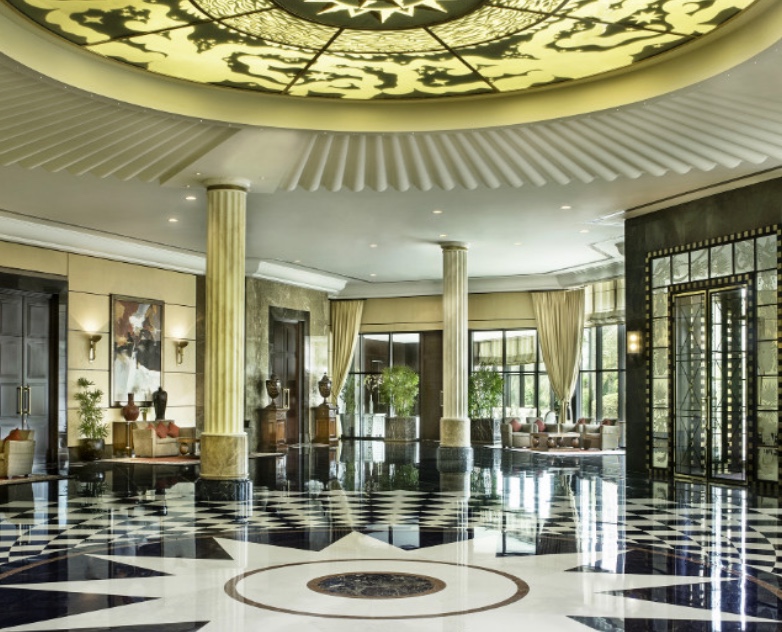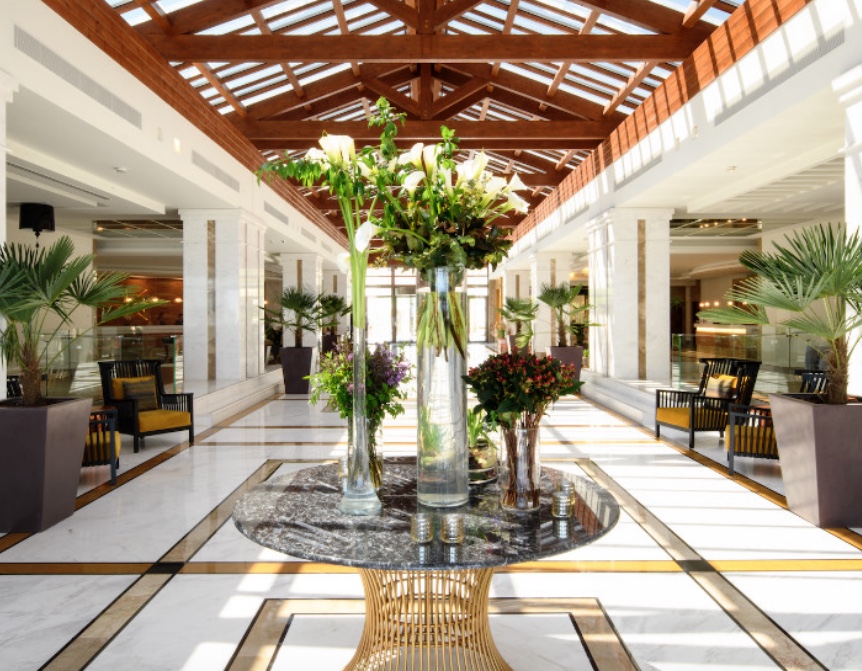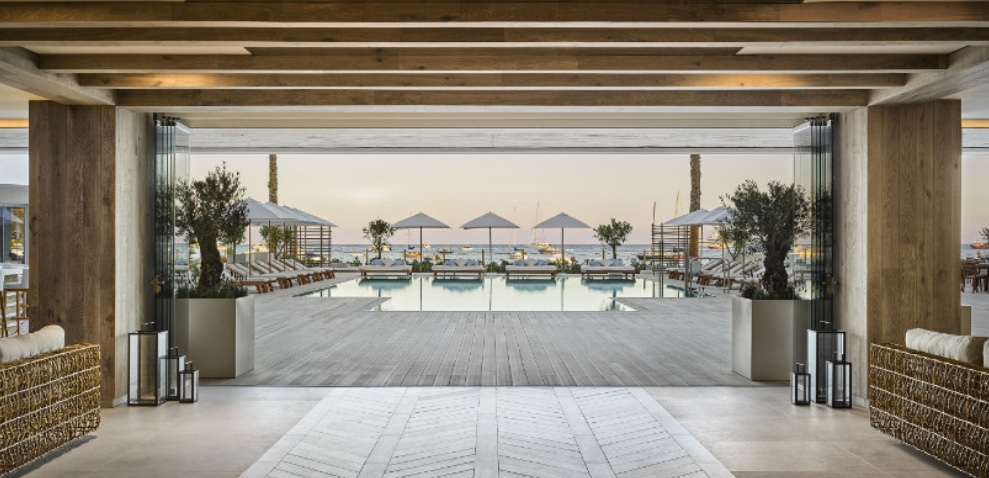The Hotel Lobby Revolution
Hotel Arts Barcelona
With Airbnb and Instagram’s influence growing, “lifestyle curation” is pushing hotels to take their lobby spaces up a notch in increasingly creative ways.
You can tell a lot about a hotel by its lobby. Unlike bedrooms, which are privy only to guests, the lobby is a communal space that gives a defining impression of what the property is all about. Five-star opulence (think Four Seasons and Mandarin Oriental) is usually exemplified by abundant floral displays, replaced before a single petal starts to wilt; while simple crash pads (such as Yotel and Hub by Premier Inn) might have self-service check-in kiosks and minimal seating, deterring people from loitering for any length of time.
New trends like remote working and sensory marketing have inspired the latest openings to take a different approach to the lobby, from utilitarian receptions with little more than a bell on the counter to open-plan lounges that lure digital nomads with Scandinavian-designed furniture and artisan coffee (the Hoxton boutique hotel chain is a good example). Pull up at the 1 Hotel in Miami and you will smell the lobby before you even set foot inside — over the last decade, many hotels have invested in signature scents, designed to stimulate an emotional connection with the brand.

Back in 2009, Hyatt launched the Andaz West Hollywood. At the time, getting rid of the conventional lobby reception desk was innovative (if a little confusing for the old guard) but many other hotels have followed suit. Instead of walking up to a counter and handing over your passport and credit card to a member of uniformed staff, at the Andaz you are checked in on a tablet by free-floating hosts and offered a complimentary glass of wine. The idea is to make guests feel at home. At the Hilton group meanwhile, there’s the offer of a mobile check-in, room selection and digital keys so guests can walk straight through the lobby without having to engage with anyone all.
This doesn’t mean interior design is neglected though. With the emergence of Airbnb and Instagram, along with the rise of the freelance economy, hotels have been forced to work harder, turning lobbies into the kind of space locals and guests alike will spend time in, rather than simply pass through en route to the lift. Consider Ian Schrager’s new Public hotel in New York, which has two floors of co-working and hangout space that is buzzing day and night with hipsters all too happy to conduct informal meetings over cocktails or catch up on emails while sitting on stepped leather banquettes. The lobby bar, yellow pool table and ultra-long white sofas are central to its convivial feel and, of course, there are plenty of power points and super-fast free Wi-Fi so everyone can stay online

Marriott’s Moxy chain is another advocate of the lobby-cum-social hub, removing desks from rooms to motivate guests to take their laptops downstairs. Embodying the affordable luxury trend with compact rooms and pared-back service, Moxy instead invests in great design and stylish furnishings, keeping rates low and the quality of communal spaces high.
The new flagship Moxy Times Square in New York has been designed by Yabu Pushelberg and its lobby entryway is lined with digital screens populated with AI-generated messages. You might also find a candy cart serving free confectionery and a member of staff juggling. As with all Moxy hotels, once guests have checked in, they can enjoy a free drink at the bar. With “fun” at the core of what the properties represent, Moxy lobbies also feature screens displaying live Instagram posts, and events such as tarot card readings, burlesque shows and lip sync battles.
But while the likes of Moxy and Public are working hard to reach younger travellers, just as many new hotels — especially at the most luxurious end of the market — choose a more traditional approach, reminding us that for every trend, there is an equally valid counter trend. Just look at the new Kempinski hotel in Muscat, which wants to wow guests as soon as they walk in with its palatial white marble lobby facing the sea.

It’s the same with revamps of landmark properties such as the Savoy in London, the Ritz in Paris and the Beverly Hills Hotel in Los Angeles. There is surely a temptation to modernise but how far that will go depends on how much the management is willing to risk alienating loyal clients. At such hotels, the gilding, antiques, plush carpets, expensive art, reception desk and flowers are going nowhere — and for millennial guests at least, remain equally Instagrammable.
By Jenny Southan

